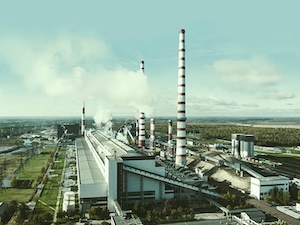According to Margus Vals, Member of the Board, two technologically most suitable solutions have been identified for Enefit’s plants, allowing to capture at least 95% of СО₂ emissions. The next step is to choose the best one together with technology providers.
“The world's demand for fossil fuels is decreasing, but increasing for everyday consumer goods produced from petrochemicals. The “Enefit” technology used by Eesti Energia reprocesses end-of-life plastic products and waste tyres into raw materials for other industries. This way, those barrels of oil will not have to be pumped. We are creating a perfect circular economy: every product can be used to make a next product, and when the end product's useful life is over, we can use it again as a raw material. It is also important to capture and utilize the СО₂ generated during production. Although there is still a long way to go, we have taken some important steps,” Vals said.
The first of the selected solutions captures СО₂ before it exits the chimney – something that is used on an industrial scale in countries such as Norway, Canada and the United States. The second one captures СО₂ during the production process, before it reaches the chimney – something that has been implemented so far in demo plants. The most suitable technology could become clear by the end of 2023. At the same time, together with research and development partners, Eesti Energia is looking for solutions on how to use captured carbon in the future.
“Capture may become profitable as early as in the next few years, considering the СО₂ quota prices. However, it is more important to solve its transport, storage and recycling. These are issues that Eesti Energia is already dealing with, but which may not be answered until the end of the decade, as the field is developing rapidly in parallel with our research,” Vals said.
According to Professor Alar Konist, who led the research at TalTech, Estonia could become a benchmark for СО₂ capture and deployment by taking advantage of local know-how and the support of innovation-supporting funds.
“The price of СО₂ is high and must remain high. This is the only way we can introduce innovative technologies and applications in parallel with the development of renewable energy,” Konist said. “The technology for capturing СО₂ is ready, but due to the uncertainty of the economic environment, the field is moving forward more cautiously than it could. A faster spread of renewable energy could speed up things. Capturing СО₂ is very energy-intensive, and affordable renewable energy would allow this cost component to be reduced. Captured СО₂ can be used to make new products such as chemicals, solvents and methanol. In addition, capturing СО₂ reduces the amount of other emissions.”
Eesti Energia will stop producing oil shale electricity by 2030 at the latest. The owner of the company, i.e. the Estonian state, has set the task of creating more and smarter value from oil shale. Therefore, they are gradually transitioning from the production of liquid fuels to a carbon-neutral chemical industry. The first step is to start recycling waste tyres and plastic waste. The capability to recycle waste tyres is available and it will start in 2023.
Eesti Energia has successfully tested using waste plastics and the goal is to reach industrial implementation within a few years. The company wishes to give a more useful function to its industrial complex in Ida-Virumaa, preserve existing jobs and create new ones, and encourage the emergence of further industries.


